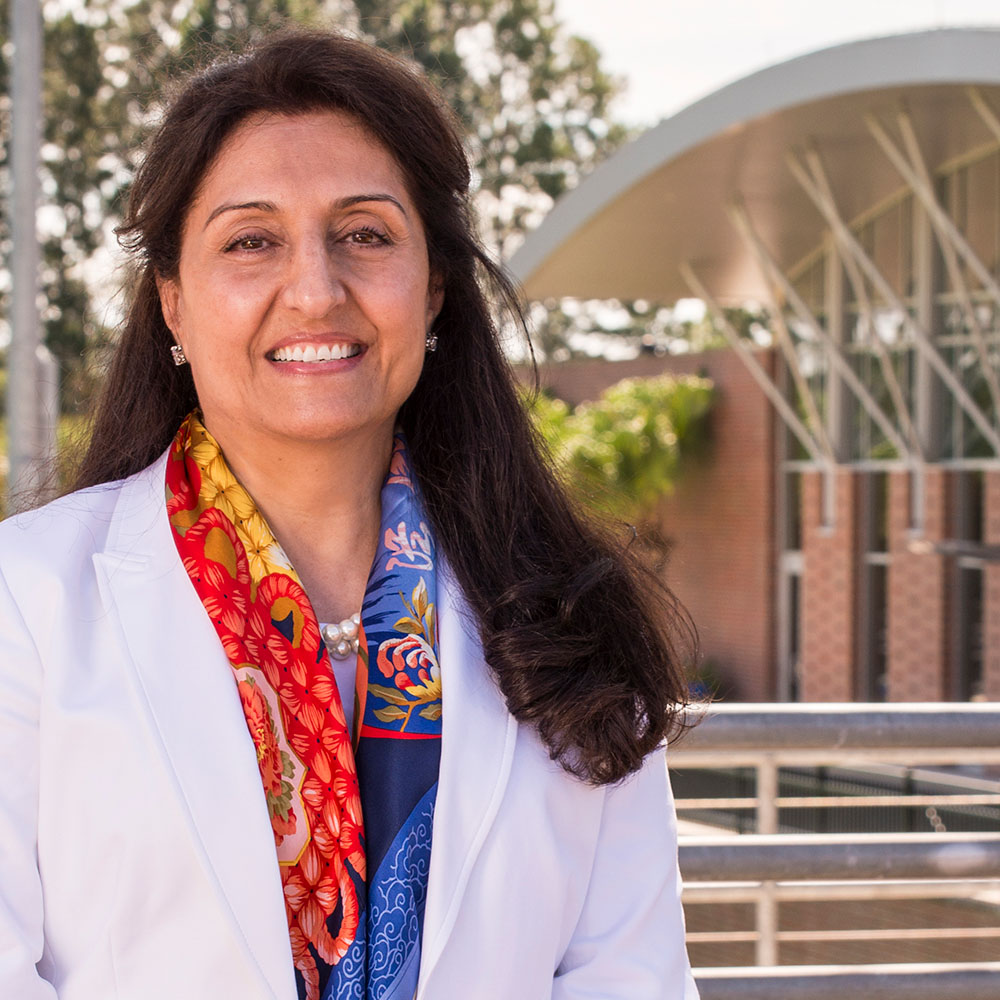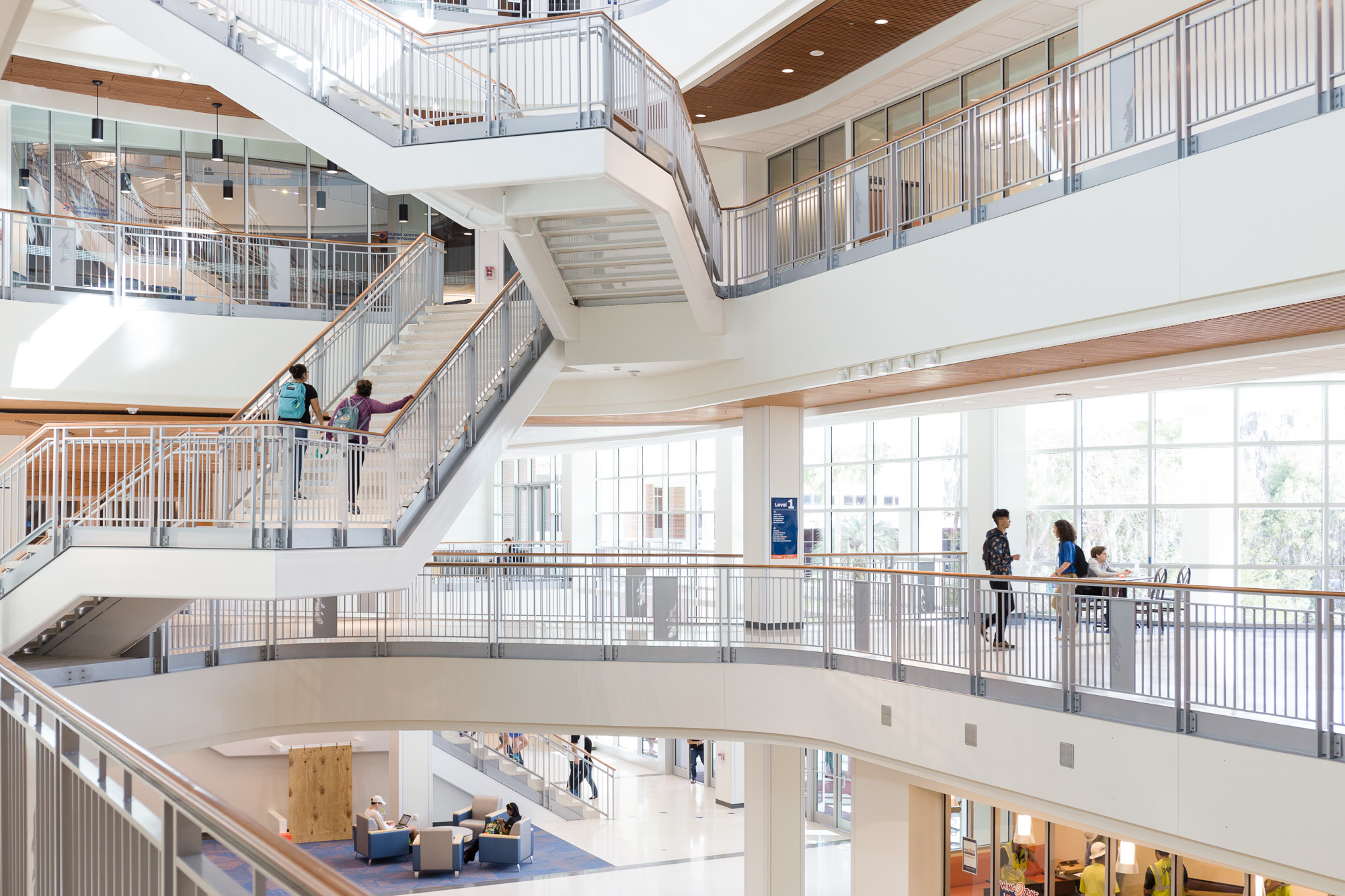
For Women in Construction Week, UF News talked with Bahar Armaghani, director and lecturer of Sustainability in the Built Environment program in UF’s College of Design, Construction and Planning. Armaghani established UF’s LEED program and has served as director for more than decade. She also managed dozens of major projects on campus, including the O’Connell Center, Southwest Recreation Center, Library West and Heavener Football complex. Since 2006, Armaghani has developed teaching and graduate level courses on sustainable design, construction and operation. She advocated the integration of LEED into the curriculum.
The impact from construction lasts for decades and affects the lives of current and future generations as buildings consume major resources. Non-sustainable construction practices are responsible for enormous amounts of resource consumption, global energy use and greenhouse gas emissions.
Advances in sustainable construction, also known as “green” building, are revolutionizing the construction industry. However, many think green building is trendy and don’t understand its full potential. Bahar Armaghani, director and lecturer of Sustainability in the Built Environment program in UF’s College of Design, Construction and Planning, is one of four LEED fellows in the state of Florida. She is also the only female fellow in the group. “Ironically, they are all men except me,” Armaghani said. “I really try to encourage my young students and show them that they can do it too!”
Armaghani has dedicated her career to the study of sustainability in the built environment and the evolving role it has in our daily lives, and talks about the importance of green building and why it is becoming more of a necessity.
What is sustainable construction?
Sustainable buildings are built with a holistic approach to the structure and the application of processes in planning, design, construction, and operation. Green products, materials, and technologies make buildings more energy-efficient, environmentally responsible, and resources efficient throughout the building’s life-cycle, creating a lower carbon footprint and reduce costs from the ground up.
Many design firms have embraced sustainable design and have integrated it into their practice, but there is still need to educate more on the long term value of sustainable design. Most importantly, there is a need to educate clients who hire the design teams about the goals, costs and long term benefits of green. The design, construction or operation of these buildings ultimately reduces or eliminates negative impacts on our climate, natural environment, and provide healthy environment for the occupants.
“If you don’t have a good plan, you can’t just jump into the design and then into the construction,” Armaghani said. “Construction is good, but you have to have a wise design.”
The benefits of going green
Green construction materials, such as porotherm bricks, green insulation and other biodegradable materials help to create energy-efficient buildings and help reduce carbon footprints. They require fewer resources to develop, last longer and often can be more aesthetically pleasing. They save money by reducing energy and labor costs, and resale values of green buildings are usually greater than those that are conventionally built. Going green is a long-term commitment, but can save businesses and consumers long-term.
These materials can also enhance school, work and living conditions. According to the Environmental Protection Agency, indoor air quality is a greater health hazard than outdoor air pollution with pollutants being up to 100 times higher indoors.
While non-sustainable construction materials contain chemicals that can cause irritation, breathing trouble and illness, many green building materials are free of harmful toxins and cancer-causing substances. These materials can increase the longevity of buildings, provide efficient use of energy and water, and improve indoor air quality, providing comfort and higher health benefits to those inside. Some LEED standards have been written into building codes across the country in an effort to ensure that the next generation of homes, offices, schools and hospitals are more resource-conscious than the last.
“Both nationally and internationally, if you look at the number of green and LEED certified buildings, you will see that more people are going in that direction for many reasons -- some for people's health and the environment, some because of the economic aspects,” Armaghani said.
Taking green mainstream
The concept of green building is not new, and sustainable construction efforts have been implemented at the University of Florida since 2003. Currently, there are 78 LEED certified buildings across UF’s campus.
Research and advancement in the field over the past couple of decades have reinvented the definition of green building and modern technologies have made green building materials more accessible, useful and reliable than before.

The J. Wayne Reitz Union, a LEED Gold certified building on UF’s campus, has been awarded for its sustainability efforts.
Lean construction practices, renewable energy and increases in WELL Building Standard, advancing the health and well-being in buildings globally, are the next big things in green building, according to Armaghani. WELL builds on LEED, starting where LEED left off including nourishment, fitness, mind, and comfort, and is changing industry standards. By integrating more wellness into the built environment, WELL encourages healthy lifestyles. Building and living green is becoming increasingly popular from both a financial and human perspective, and the industry is beginning to embrace a sustainability-friendly mindset.
“Sustainability will undoubtedly become the biggest trend of all future designs and constructions,” Armaghani said.